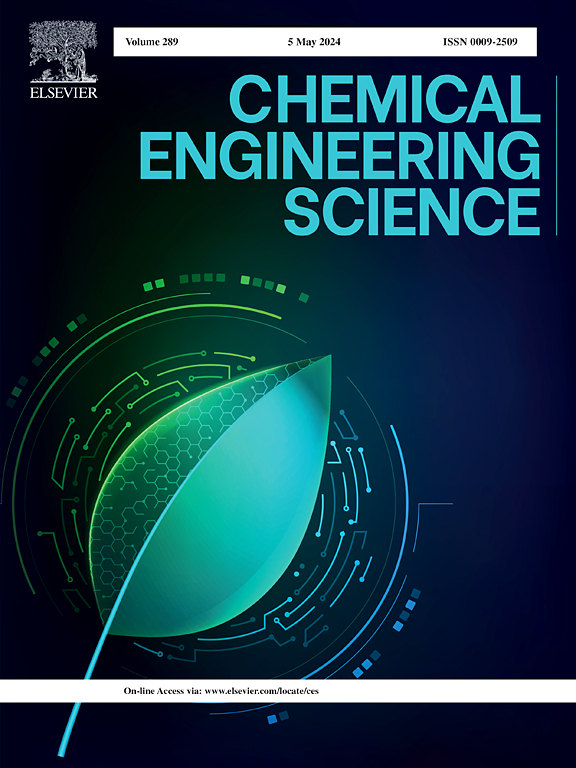Study on the mixing behaviors between the intrusive side fluid and the main fluid in a LDPE tubular reactor
IF 4.1
2区 工程技术
Q2 ENGINEERING, CHEMICAL
引用次数: 0
Abstract
The intrusive tee-junction mixing process in LDPE tubular reactors is investigated through computational fluid dynamics (CFD) simulation, and a special climbing mixing pattern under a large main-to-side flow rate ratio is observed. The formation mechanism of climbing mixing is the result of the interaction between the main fluid, side fluid, and side feed pipe, especially due to the formation of local low-pressure areas and vortex structures that push the flow along the wall of the side feed pipe in the direction opposite to the side feed. Influences of the side feed pipe’s insertion length on the critical conditions for the transition from jet mixing to climbing mixing are discussed. A dimensionless parameter ΔP/(vm,L2·ρm) is proposed to explain the mixing pattern transition quantitatively. It is concluded that as the insertion length increases, the main fluid velocity should increase to provide enough radial static pressure difference and form the climbing mixing pattern.
LDPE管式反应器中侵入侧流体与主流体混合行为的研究
通过计算流体动力学(CFD)模拟研究了LDPE管状反应器内侵入式三叉混合过程,观察到大主侧流量比下的特殊爬升混合模式。爬升混合的形成机理是主流体、侧流体和侧进料管相互作用的结果,特别是由于局部低压区和涡结构的形成,推动流动沿侧进料管壁向与侧进料相反的方向流动。讨论了侧进料管插入长度对射流混合向爬升混合过渡临界条件的影响。提出了一个无量纲参数ΔP/(vm,L2·ρm)来定量解释混合模式的转变。随着插入长度的增加,主流体速度应增大,以提供足够的径向静压差,形成爬升混合模式。
本文章由计算机程序翻译,如有差异,请以英文原文为准。
求助全文
约1分钟内获得全文
求助全文
来源期刊

Chemical Engineering Science
工程技术-工程:化工
CiteScore
7.50
自引率
8.50%
发文量
1025
审稿时长
50 days
期刊介绍:
Chemical engineering enables the transformation of natural resources and energy into useful products for society. It draws on and applies natural sciences, mathematics and economics, and has developed fundamental engineering science that underpins the discipline.
Chemical Engineering Science (CES) has been publishing papers on the fundamentals of chemical engineering since 1951. CES is the platform where the most significant advances in the discipline have ever since been published. Chemical Engineering Science has accompanied and sustained chemical engineering through its development into the vibrant and broad scientific discipline it is today.
 求助内容:
求助内容: 应助结果提醒方式:
应助结果提醒方式:


